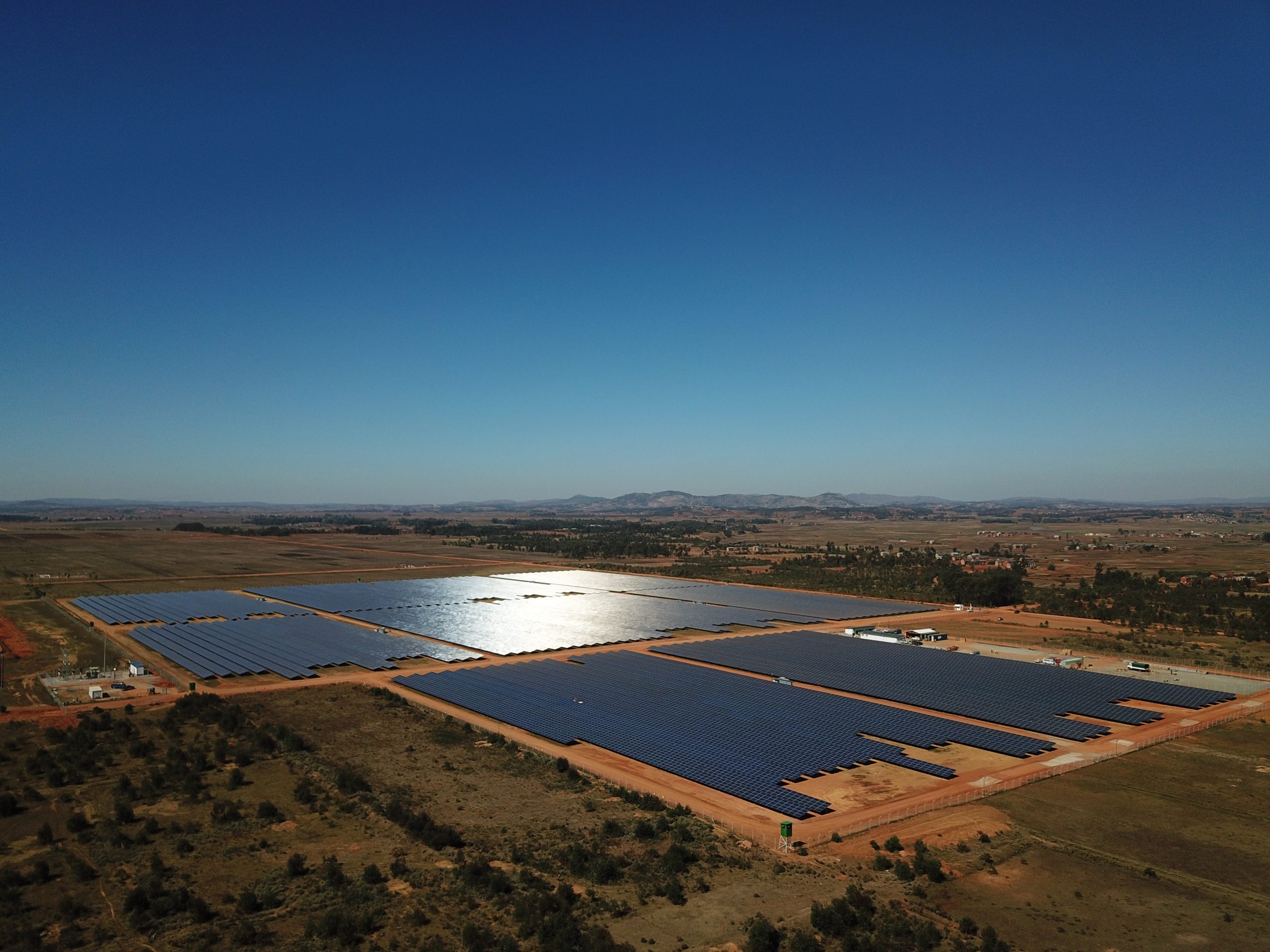Rooftop solar plant
Enhance the rooftops of your sites and reduce your energy bill.
A rooftop solar plant , also known as a rooftop photovoltaic solar plant , is a solar energy production system that is installed directly on the roof of a building, converting sunlight into green electricity.
The advantages of a decentralized rooftop solar plant are numerous. First of all, the solar plant uses available space on the roof of a building that would otherwise be unused. This saves valuable floor space in dense urban areas.
In addition, a solar plant rooftop system can reduce a building's energy costs by producing green electricity on site (self-consumption). This can enable building owners to reduce their energy dependence on the power grid and cut their electricity bills.
In some cases, the surplus green electricity produced by the solar plant rooftop system can even be sold back to the electricity grid, generating additional income. In this case, we're talking about a hybrid system with feed-in to the electricity grid.
Rooftop solar power plants help green the local energy mix.
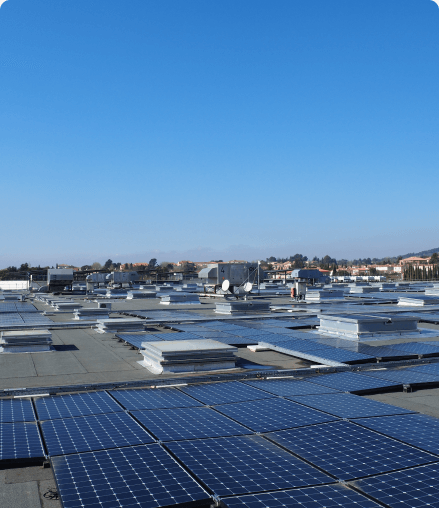
Carport Installation
Valuing lost floor space and contributing to the transition to a greener economy.
A solar parking lot shade is a horizontal or sloping structure designed to provide protection from the elements or shade for parked vehicles, while capturing solar energy and converting it into green electricity. These structures are generally installed in outdoor parking lots, such as supermarket parking lots, public parking lots or company parking lots.
Solar shading systems for parking lots can be fitted with charging stations for electric vehicles. So, as well as providing shade and solar energy, they also enable drivers to recharge their electric vehicles while parked.
The electricity generated by the solar panels on the shading systems can be used locally to power the sites, or fed into the electricity grid.
Photovoltaic shading reduces electricity consumption from the grid and dependence on fossil fuels, and promotes the use of renewable energies.
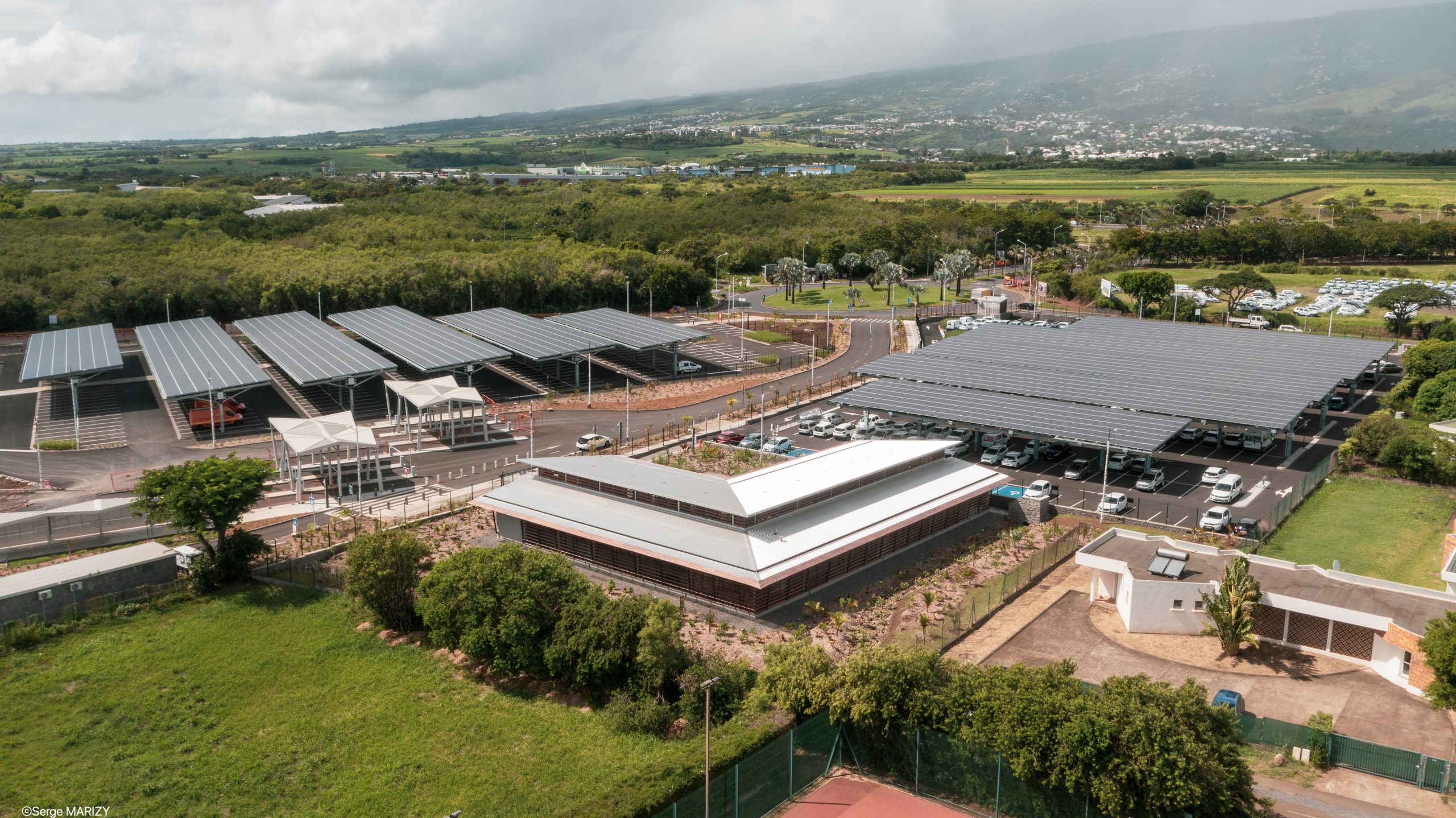
Solar Farm
Valuing unused space
A ground-mounted solar farm, also known as a solar park, is a solar energy production facility that uses photovoltaic solar panels installed on the ground .
In contrast to solar installations on the roofs of buildings, ground-mounted solar farms are generally larger in size and can cover areas of several hectares.
Flat, open land of several hectares, which is often degraded sites such as polluted sites, former quarries or landfills, for example, or buried water retention basins are particularly well-suited to the installation of a solar farm. Solar farms can also be installed on cultivated land, offer dual use (agrivoltaics) by protecting crops .
Ground-mounted solar farms are connected to the existing electricity grid to distribute the electricity generated. The green electricity generated can be used locally for self-consumption, or fed into the grid to meet regional energy demand .
Solar photovoltaic farms are accessible to all local communities and businesses, subject to certain conditions, including land ownership, agreement to connect to the electricity grid and compliance with town planning regulations. GreenYellow supports you throughout the entire value chain .
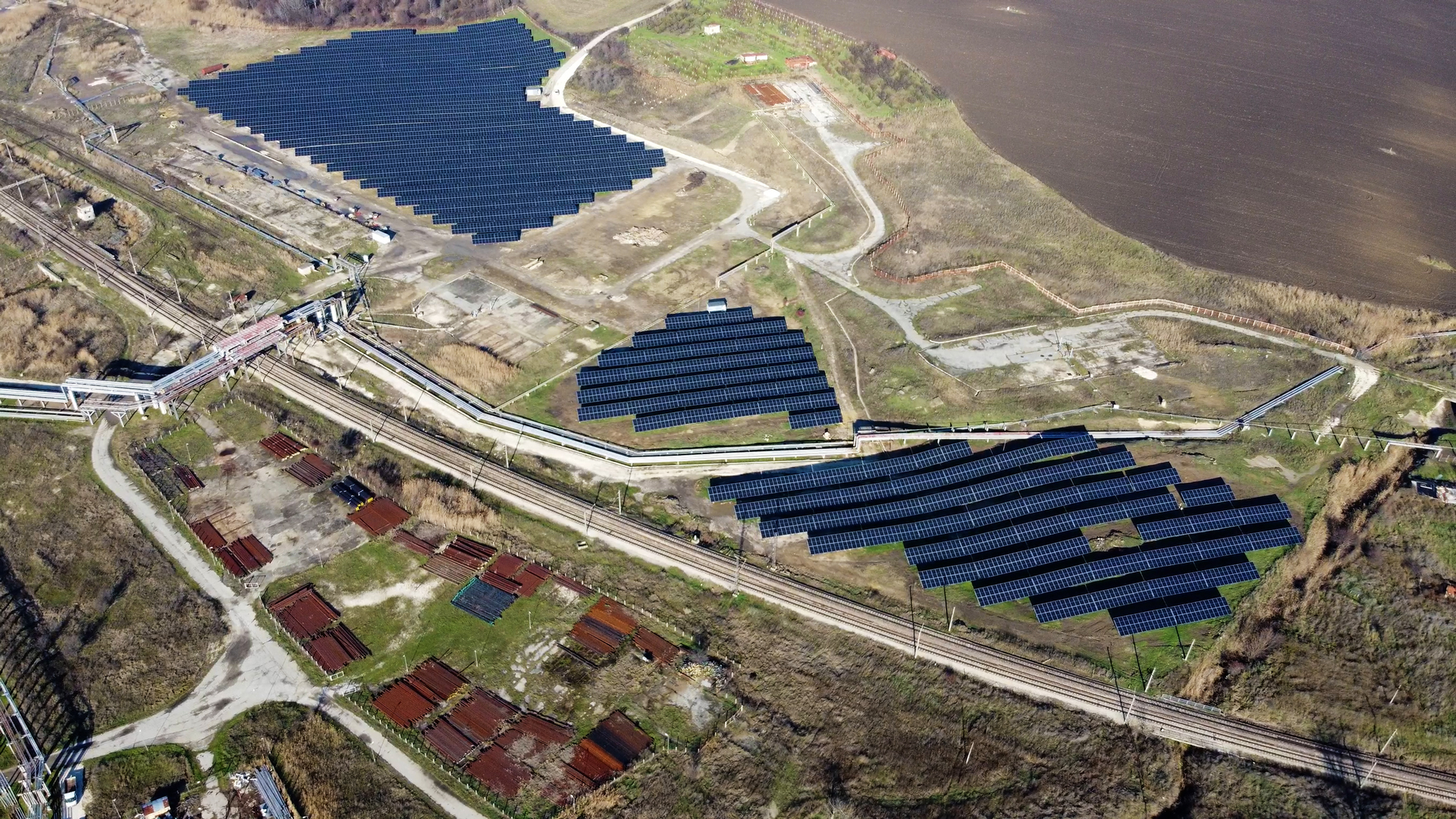
Solar Floating
Emerging technology for water bodies
Floating solar power, also known as floating photovoltaic power plants, involves installing solar photovoltaic panels on floating structures fixed to the bottom of lakes, reservoirs, dams or oceans, or held in place by anchors or mooring devices. Photovoltaic solar panels are specially designed to withstand aquatic conditions .
Floating solar power plants offer environmental performance and a number of advantages, including:
- Water savings. By partially covering the water surface, floating solar systems can reduce evaporation, which is beneficial in arid or drought-prone regions.
- Better control of algae proliferation thanks to water surface coverage that reduces sunlight penetration, thus helping to preserve water quality.
- Improvedperformance of solar plant . Water helps cool photovoltaic solar panels, which can improve their efficiency and energy yield.
- What's more, it's easy to dismantle, and the price of floating solar power is virtually equivalent to that of land-based plants.
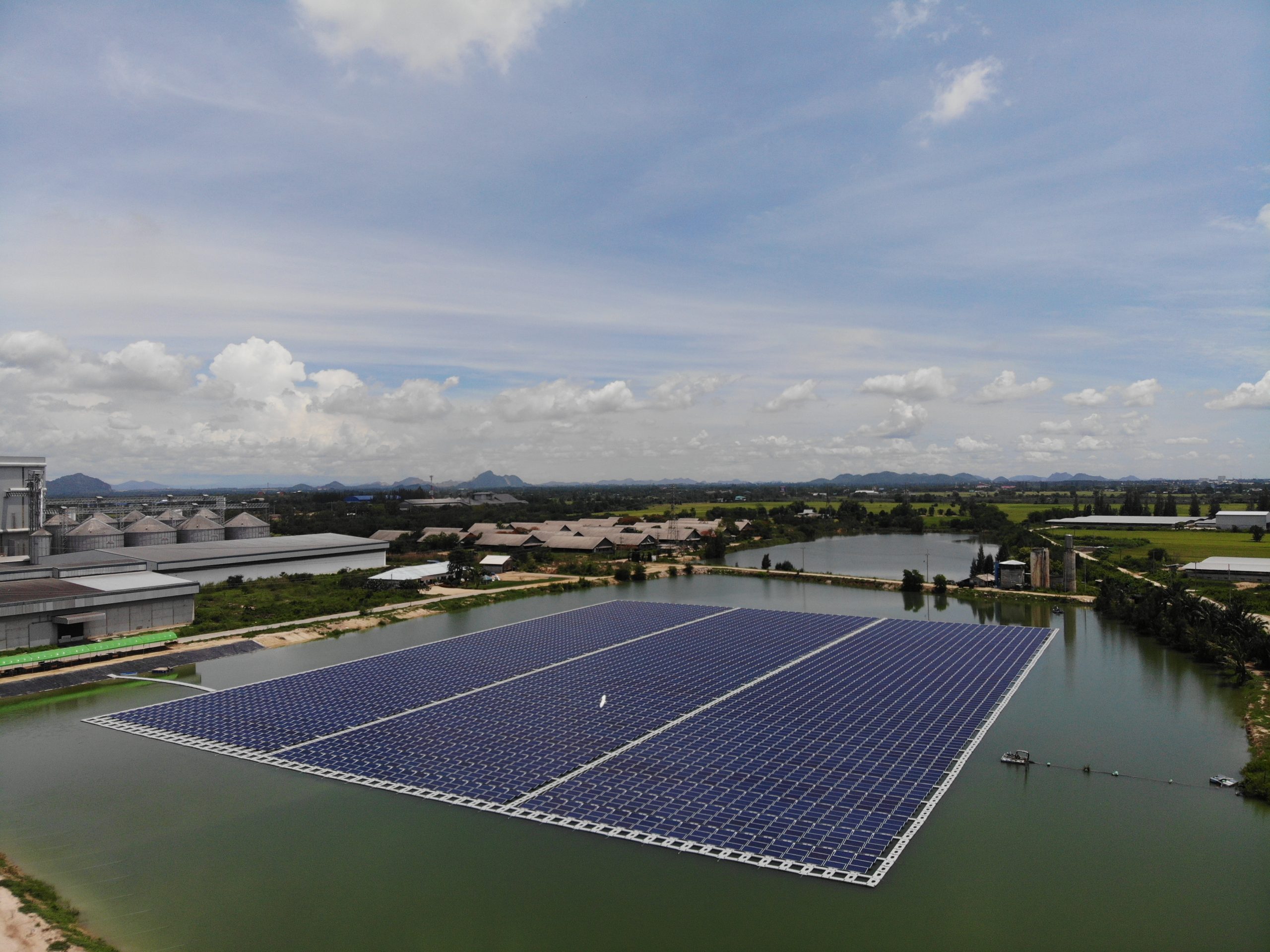
Hybrid system
Combination of renewable energy source and conventional generation system
Due to solar intermittency, photovoltaic generation alone cannot supply all types of load profile. Hybrid systems, which combine a renewable energy source with a conventional generation or storage system, such as a generator or battery storage, offer great flexibility in terms of controlling the mode of generation and the amount of energy produced. This is particularly suitable for isolated industrial sites or where the electrical load is constant throughout the day .
The idea behind a hybrid solar system is to optimize the production and use of energy by taking advantage of several sources.
In the hybrid solar systems offered by GreenYellow, solar panels capture solar energy and convert it into electricity. This electricity can be used directly to power self-consuming appliances, or stored in an electricity storage battery for later use. Eventually, when solar energy is not sufficient to meet energy needs, another energy source, such as a generator, comes into play to supply the additional electricity required.
The advantages of a hybrid solar system are numerous. Firstly, it enables more efficient use of solar energy by maximizing production during peak hours and using other energy sources when solar power is limited. This can be particularly useful in regions where sunshine varies considerably over the course of the day or the seasons.
Secondly, a hybrid solar system offers greater reliability and a continuous supply of electricity. In the event of a solar power shortage, or when energy demand is higher, the storage battery can take over to avoid power interruptions.
Finally, a hybrid solar system can save you money on energy costs. By using more solar energy, you reduce your dependence on fossil fuels or grid electricity, which can translate into long-term financial savings.
Thanks to these hybrid configurations, it is possible to optimize the use of solar energy according to specific needs, contributing to greater energy efficiency and lower costs.
